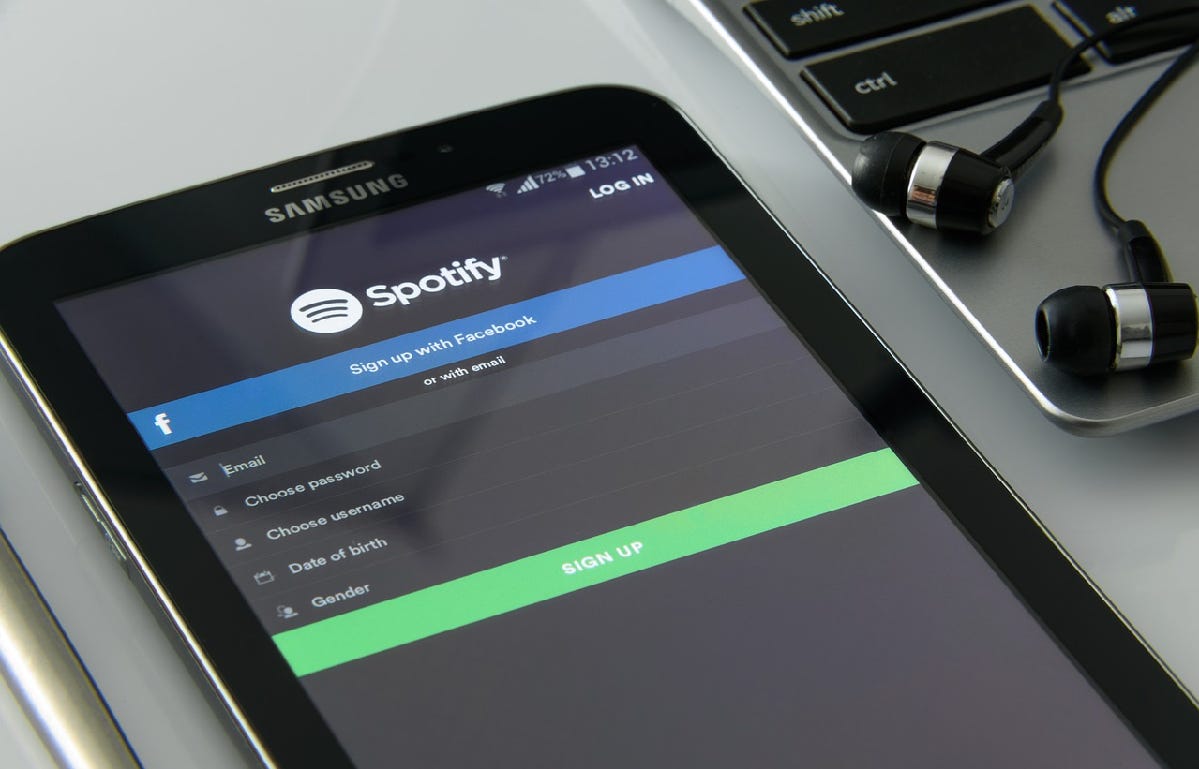Is Spotify's podcast bet finally paying off?
It's far ahead of its competitors in building a "YouTube for podcasts."

Welcome! I'm Simon Owens and this is my media newsletter. If you've received it, then you either subscribed or someone forwarded it to you. If you fit into the latter camp and want to subscribe, then you can click on this handy little button:
Let’s jump right into it…
Is Spotify's podcast bet finally paying off?
Spotify released its quarterly earnings this week, and though its topline numbers were a mixed bag, there were two metrics that jumped out at me. The first was its overall advertising revenue, which more than doubled YoY. And the second was its podcast advertising revenue, which grew by a 627%. As CEO Daniel Ek said on the call, “The days of our ad business accounting for less than 10% of our total revenue are behind us, and going forward, I expect ads to be a substantial part of our revenue mix.”
Before I go on, let me issue this caveat: that steep percentage growth is probably coming off a relatively low base, since Spotify only started really ramping up its podcast ambitions with the last two years.
That being said, I think we’re starting to see early signs that Spotify’s massive podcast bet is paying off. And what is that bet? As Hank Green put it in the Washington Post: “Spotify wants to become to podcasts what YouTube is for video.” It’s essentially attempting to combine content, hosting, and distribution so that it can deliver targeted advertising at massive scale. Because of that same strategy in video, YouTube is poised to generate $28 billion this year.
And even though several other tech behemoths have made big podcast acquisitions of their own, Spotify is well positioned to dominate the audio advertising market for the foreseeable future.
Why? Because for the past 15 years Spotify has been building up an advertising base through its free music tier in which it uses ads to “annoy” users into signing up for paid accounts. It has a huge head start over the other companies in terms of onboarding brands to its platform and optimizing its advertising tech.
Spotify’s podcast inventory has the potential to vastly expand its revenue and profits, far beyond what it was generating via the ads that run in between songs. For most of Spotify’s existence, ads have only been distributed to its free users, which means that 45% of its user base has been unreachable with advertising — even though paid users are likely its most affluent and engaged. Podcasts, on the other hand, aren’t confined by these same rules; ads are shown to both paid and free users alike, which means that Spotify is finally delivering ads to its entire audience.
And those podcast ads are probably much more profitable than music ads, the latter of which pay out steep royalties to the music labels. The podcast ads aren’t subjected to those steep marginal costs.
Are there other ways that podcasts represent a huge advertising opportunity? Why, yes! Podcast ads will allow for much better targeting than Spotify’s music inventory. If you’re a well-paid tech worker, it’s hard to discern your affluent status from the music you listen to, but what if you listen to several tech and startup-related podcasts?
It’s also worth noting that Spotify owns two podcast hosting companies — Anchor and Megaphone — that distribute shows to other platforms. That means it can extend its advertising reach far beyond its own app, and it can also collect crucial data about podcast listening that occurs on its competitors’ apps — an advantage that will come in handy as it optimizes its content recommendation algorithms.
It’s only just begun to tap into its podcast advertising potential; for instance, most of its ad inventory is served on its owned podcasts, but the company has made clear that it wants to launch a YouTube-like partnership program that’s made available to all podcasters that host on Anchor. Once that rolls out, then the sky’s the limit. No other podcast platform out there — including the ones owned by corporate behemoths like Apple, Amazon, and SiriusXM — is even close to catching up.
Quick hits
Only 25 books sell more than a half million copies a year, and only 16,000 books sell more than 10,000 copies a year. [The Novelleist]
Judd Legum celebrates his three-year anniversary of publishing the Popular Information newsletter. [Popular Information] You could make an argument that, of all the newsletters published on Substack, Popular Information has had the largest real-world impact. I'm actually working on a profile of Judd that I plan to publish later this year.
A look at all the implications of Apple's decision to stop recording accurate open rates for emails. [Campaigns & Elections]. Bottom line: if you think the open rate isn't an important metric, then you're in denial.
This is cool: The Dallas Morning News creates what are essentially slide shows and uploads them as albums to Instagram. It allows the outlet to quickly explain information in a way that's native to the platform. [Better News]
An interview with a writer who received a grant from the Substack Local program and is building a Kentucky-focused newsletter. [Newsletter Crew]
The Guardian has gotten really good at convincing readers to subscribe even though it doesn't lock any content behind a paywall. [Press Gazette]
"Playboard, the YouTube financial stats aggregator, reported that seven of the world’s 10 top Super Chat earners were Japanese VTubers." [Rest of World] What’s a VTuber? “An entirely digital YouTube celebrity — not an avatar for a real person but wholly animated and autonomous.”
“I didn’t understand how a popular book that has reached over 10 million views on online platforms wasn’t being picked up by any traditional publishers. So, not wanting to rely on anyone else for the success of my books, I began publishing them myself.” [The Novelleist]


